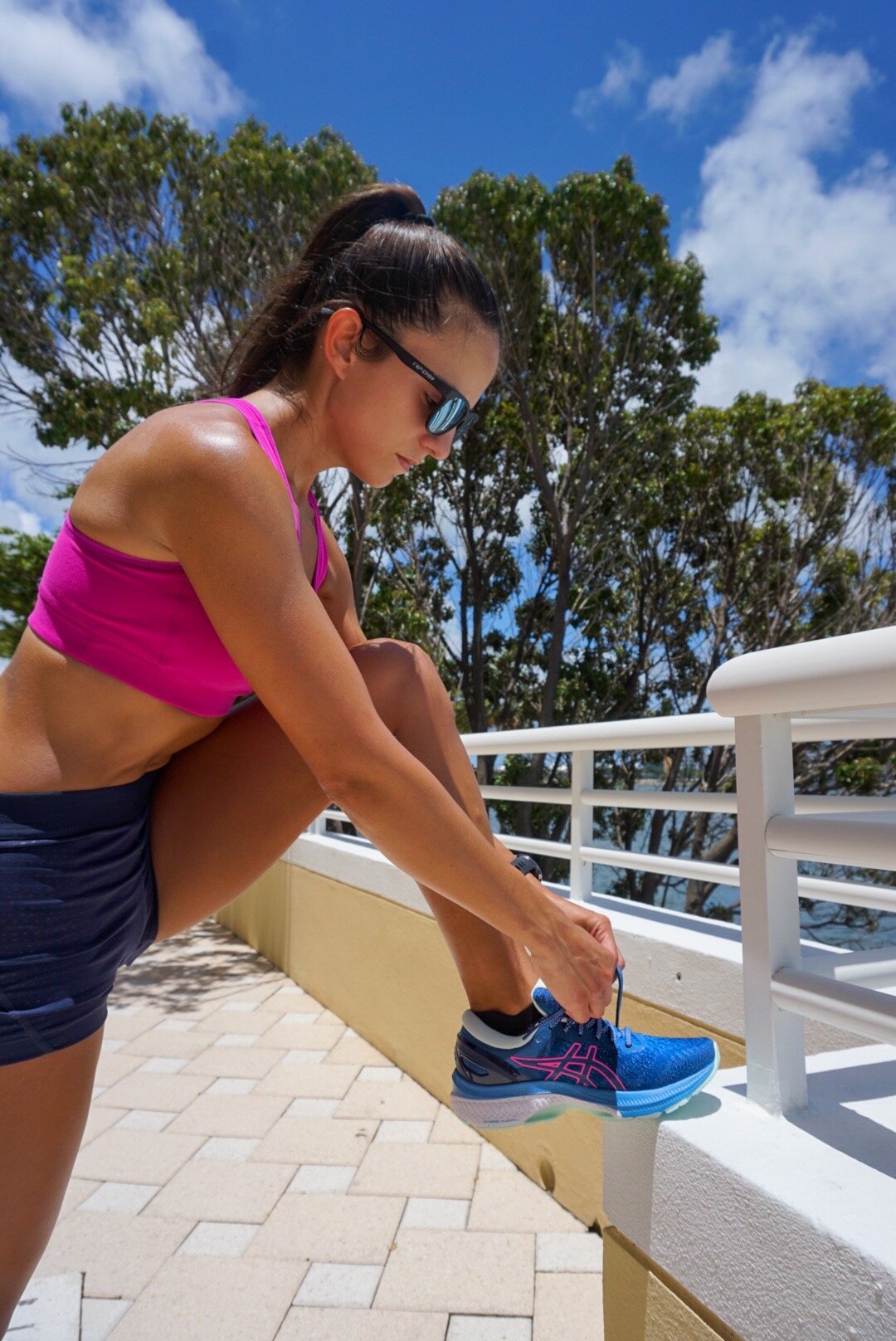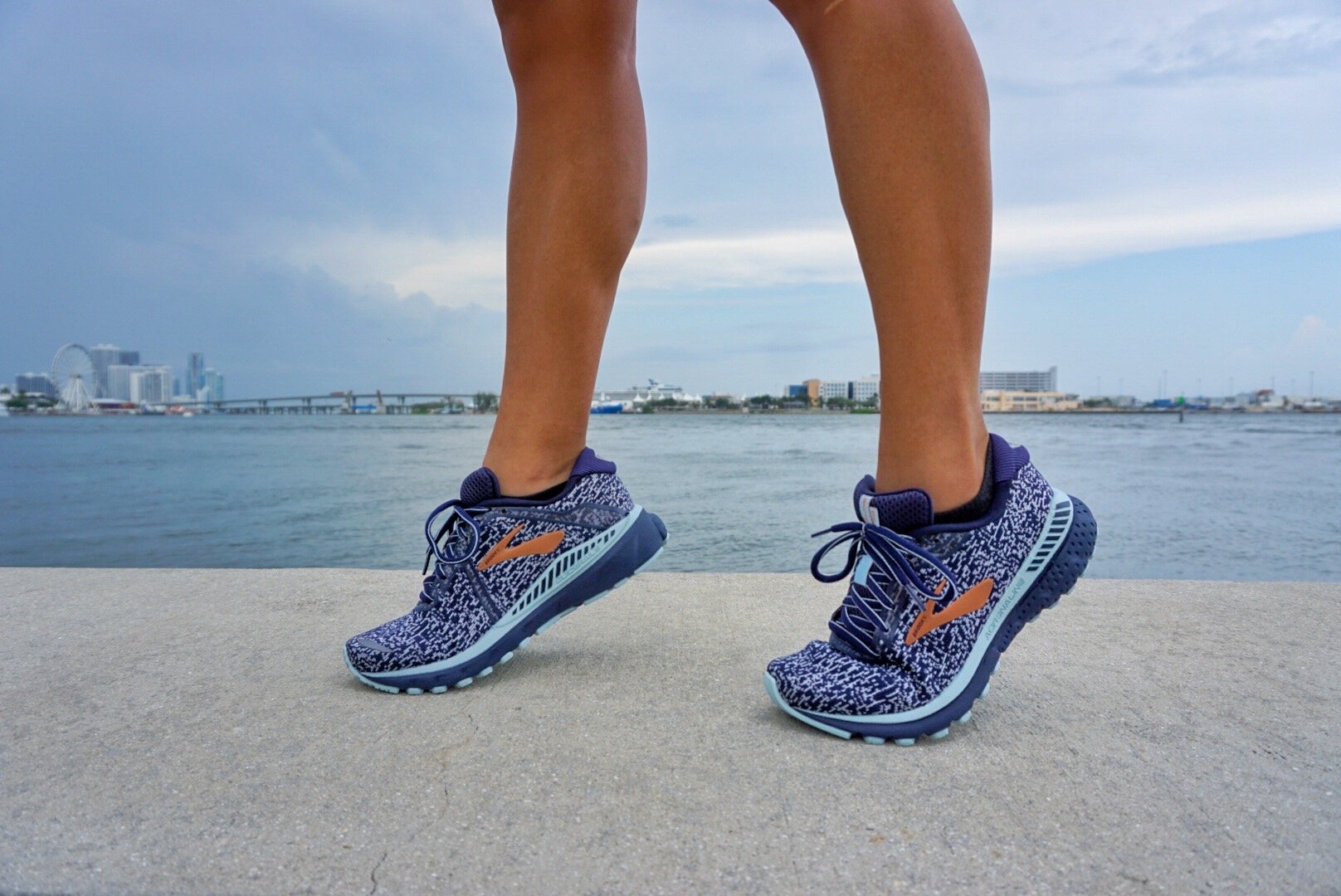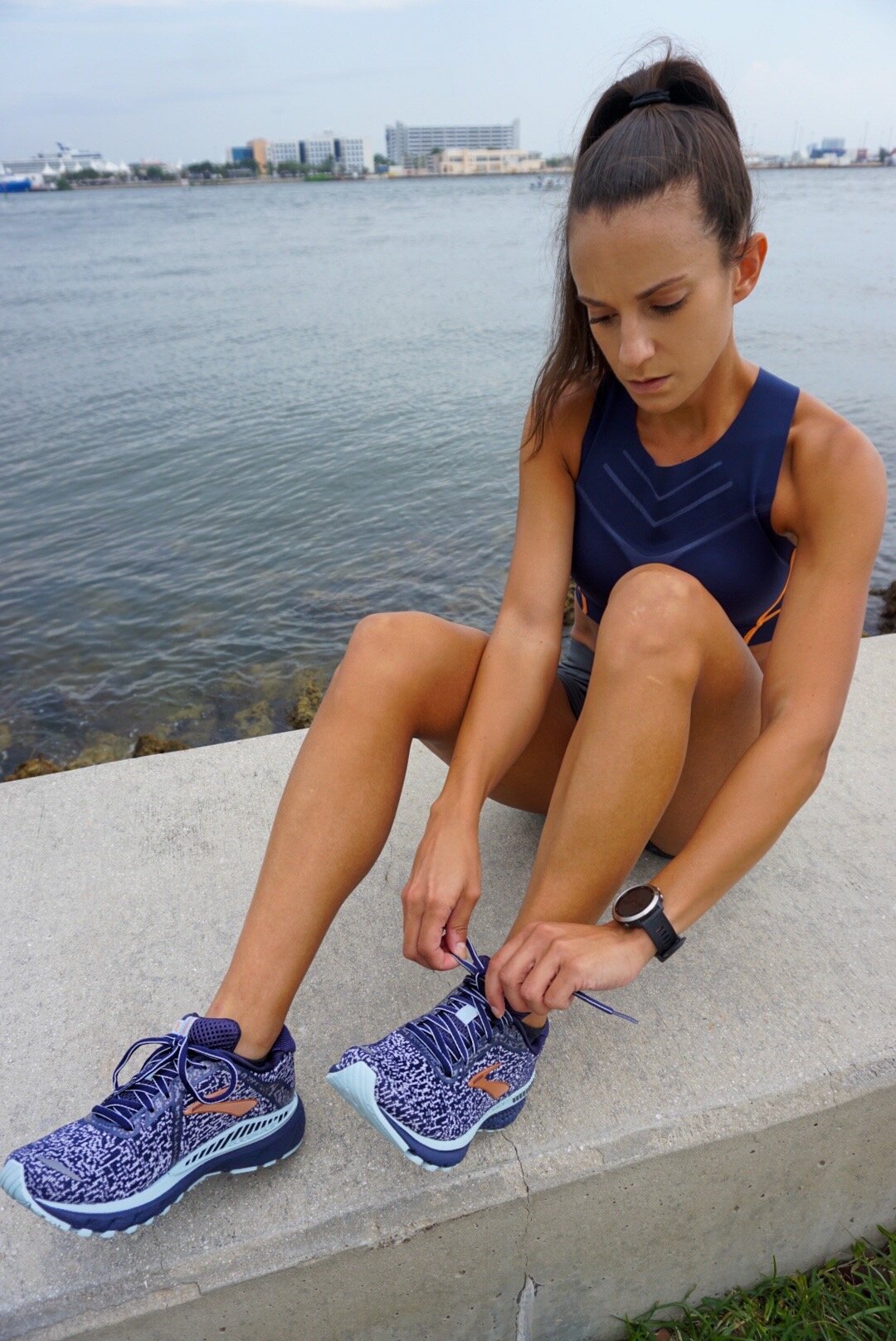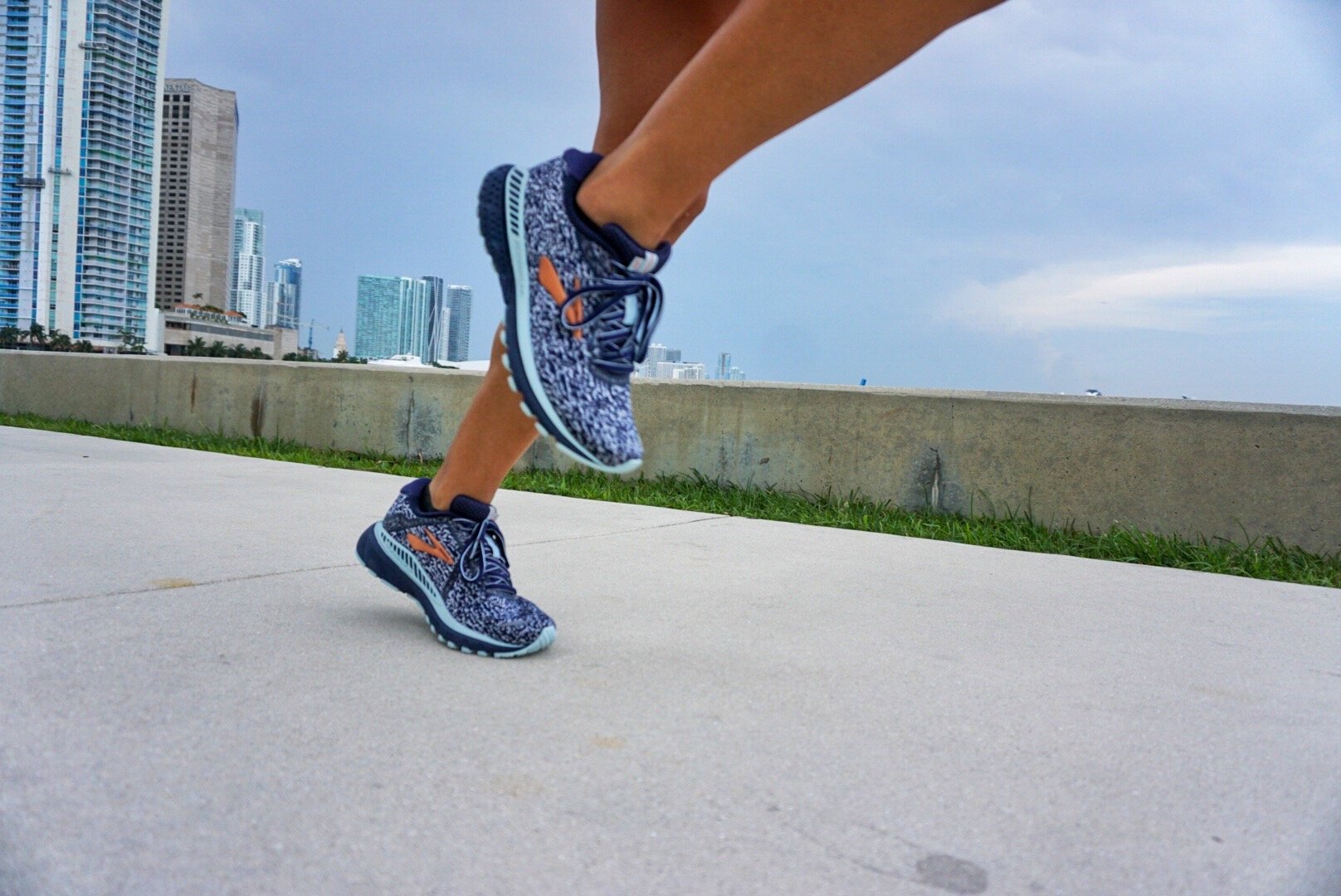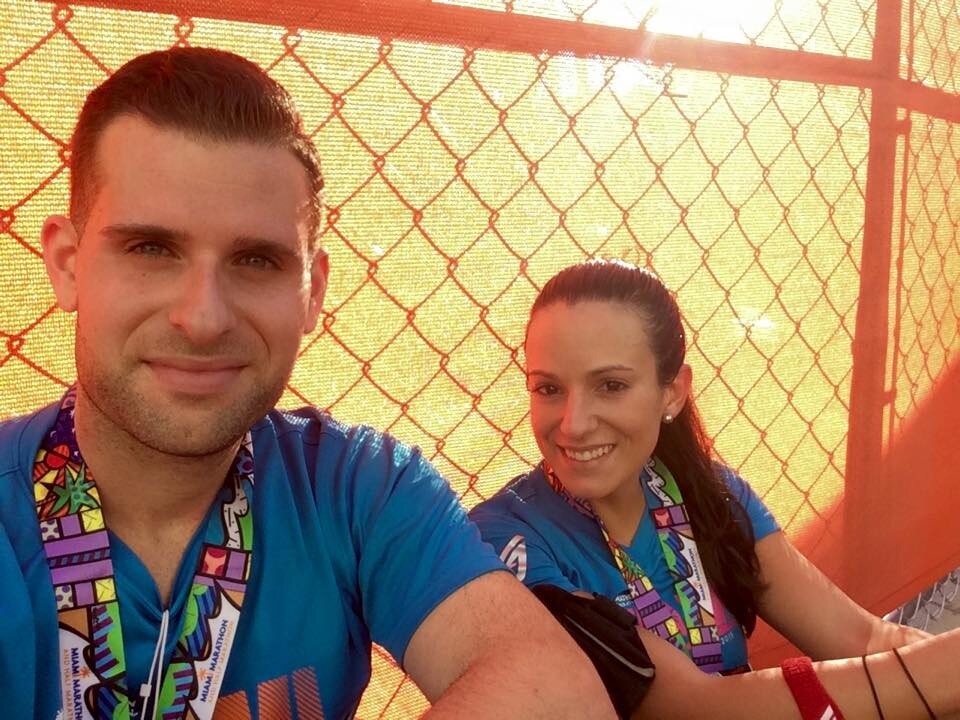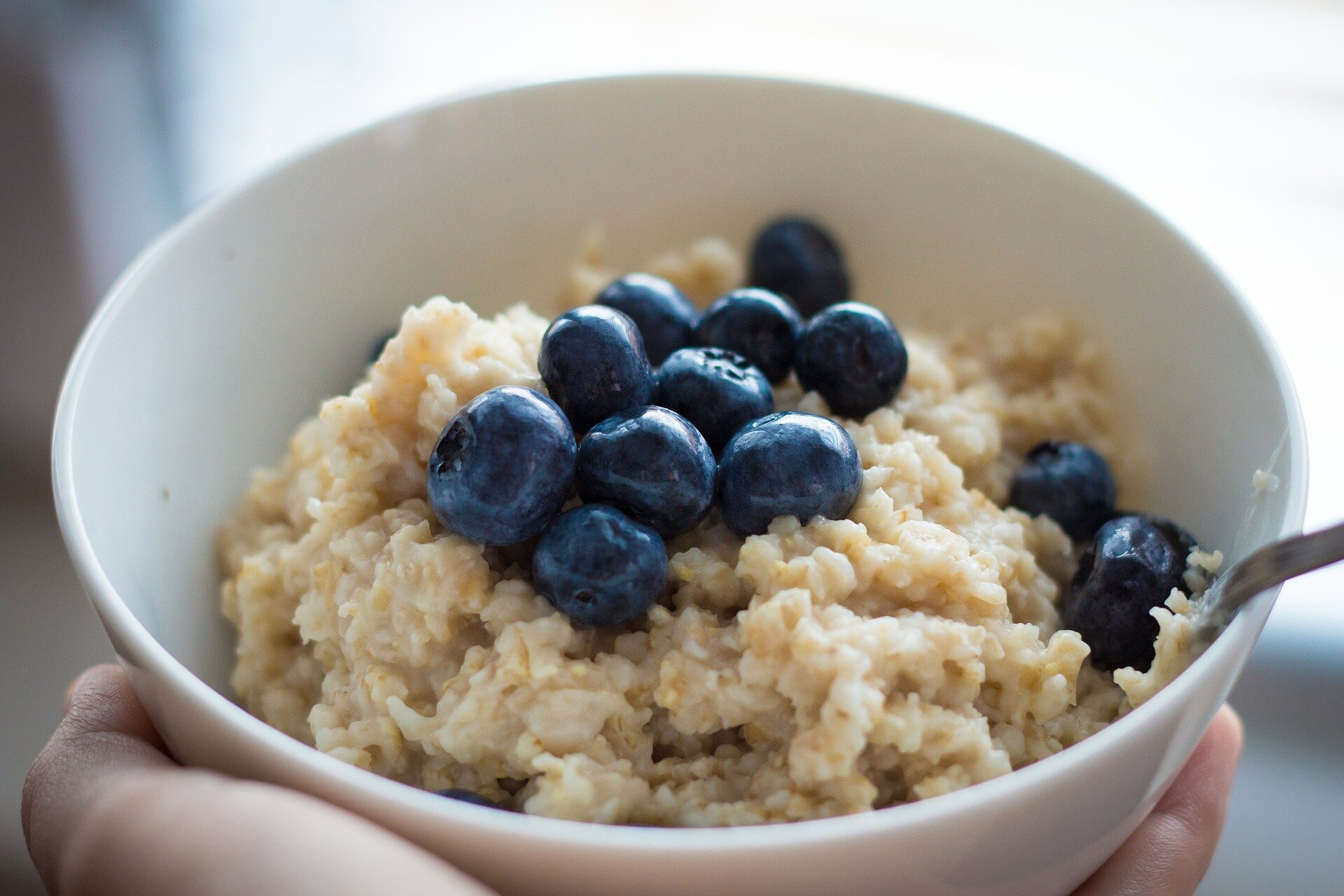Looking to start running? Maybe you’re interested in getting into a more structured plan to set yourself up with new PRs? Either way, this article has you covered! Read on to learn about my top tips to start your running journey, which are also useful for those of you getting back into the sport after a break.
Read moreHigh Volume Marathon Training: Is It Worth It?
Considering increasing your running mileage? There are benefits and downsides to high volume training, so it’s important to understand what it takes and whether it’s an option that fits into your life. Read on to learn how to incorporate more miles safely.
Read moreHeart Rate or Pace: Which is Best to Use for Training?
In the running community, there is confusion around what numbers to focus on during training. It all depends on what type of run you are doing and what method is less stressful for YOU. Read on to learn why heart rate may be the best way to train if you want to improve your running performance.
Read moreHow Easy Should You Pace Your 'Easy' Runs?
Training for a distance race requires a well rounded style of runs. This includes easy runs—the hardest for many runners to succeed at. Slowing down when you’re trying to improve your pace doesn’t make sense, but it’s an important key to faster racing. Read on to learn why and how to find YOUR easy pace.
Read moreSummer Training Success: Featuring Asics GEL-Kayano 27
Sponsored by Zappos. All opinions are my own.
Training during these hot summer months can definitely make even the strongest of runners feel so out of shape! The good thing is that the rumors are true—training in the heat helps build fitness. Every time I’ve planned a fall race, I end up dreading the fact that the bulk of the training and the most intense weeks will land on the hottest part of the year. This is coming from someone who lives in a warm climate year round! Miami is regularly warm, so you would think I am used to it even when summer comes around. But it is a different kind of heat from June through September—very high humidity and dew point and a “feels like” temperature of 100+ degrees almost every single day!
Sadly, we’ve had the majority of our races canceled for the rest of the year, so it can be tough to find the motivation to train at all, especially when it’s stifling outside. I mentioned before and I’ll say it over and over again—new shoes can do wonders to give us a push to get out the door! I’m on my fourth week of using my ASICS GEL-Kayano 27 from Zappos and I’m truly loving them for the bulk of my training. Since my focus is improving my endurance, I’m incorporating several longer easy to medium-paced runs and this pair has been perfect!
Keep It Light
This goes for not just your summer training load, but also your entire outfit. The most comfortable way to run when it’s extremely warm out is with the lightest gear. You don’t want your clothes sticking to you, so make sure you wear light, breathable materials that keep you dry. This is especially important when it comes to shoes. You don’t want your sweat to keep you from reaching your pace goals! I, myself, am definitely not a fan of running shoes that absorb all my sweat and end up feeling heavy and sponge-like—no thank you!
The GEL-Kayano 27 have been the perfect pair for summer running since they are made with a mesh upper that allows air to flow through the shoes to help keep you dry. This is a bit of an update from the previous version, since they expanded the space in between the material’s fibers. Even the sock liner inside the shoe stays dry! By the way, the sock liner actually adds extra plush cushioning that I feel makes long runs much more comfortable! My feet tend to get sore, especially since I’ve had 12-years full of bouts of plantar fasciitis, so any extra cushioning that does not add weight is a plus.
Versatility
I have a neutral running stance and normal arch height, so I generally don’t have to worry about finding a good stability shoe. What I’ve noticed when researching running shoes is that it’s hard to find a pair that works really well for both neutral and overpronating runners. Usually the stability aspect tends to feel stiffer along the outsole if you are a neutral runner, therefore not as comfortable for speedier runs.
The ASICS GEL-Kayano 27, however, is the best of both worlds! The DUOMAX support system helps limit the foot rolling inward (overpronate), but not at the cost of cushioning. It’s made with softer materials so from when the foot strikes the ground all the way to the push-off phase, it keeps the impact less intense, while providing the springiness we want to run at any pace. I noticed this the most when making turns on my runs—the shoe feels like it conforms to the shape of your foot like a foam mattress would, but kept my ankle secure as it rotated.
All in all, I feel the ASICS GEL-Kayano 27 does a great job at protecting my injury-prone feet during my high-mileage training program. After trying them out for every type of run—easy, long, sprints, tempo runs, and hill running, I find they work well for each, but are truly the perfect fit for medium to long consistently paced runs. Since these have been my go-to pair for the bulk of my easy and recovery runs, I even bought a second pair! There are several colors to choose from at Zappos, so take a look for yourself and don’t forget about signing up for the Zappos rewards so you can take advantage of the many benefits, like free expedited shipping, points on every purchase, and a 365 day return policy!
Shoe Review: Brooks Adrenaline GTS 20
Sponsored by Zappos Running. All Opinions are my own.
Stability, cushioning, responsiveness…it all sounds like the best way to describe a good running shoe, but what do these terms really mean? Do all running shoes really have the right amount of everything to protect us from injury and help us run our best? The answer is no. All shoes are made differently and it takes time and patience to find the right pair. If you ask a hardcore runner what they want in a shoe, most likely they will say “fast” is their priority. The problem is shoes that help with speed, are not the most comfortable. You pretty much have to give and take when it comes to deciding on the right pair. The most important feature to look for in running shoes is support. After all, that’s what shoes are made for—to support our feet.
In comes Brooks Adrenaline GTS 20. I was lucky enough to snag a pair from Zappos, where I regularly buy all of my running clothes and gear. Their extremely large selection of products guarantees that you’ll find what you need every single time. As a Rewards Member you get free expedited shipping and free returns for a year, so there is no reason to shop elsewhere! I’ve heard great things about the Adrenaline GTS 20 so I wanted to try out a pair myself. It was a hard choice out of about two-dozen color options. I selected the peacoat/light blue/copper, which looks even better in person!
Chain Reaction
Did you know any problems that arise in the feet could lead to issues and injury in higher joints in the body? For example, if you overpronate, this causes the foot to buckle inwards, which causes the knee to rotate and pressure to get unevenly distributed even up to as high as the lower back joints. Ankle and foot problems are frequently the initial cause of knee pain in runners. This is one reason why I love the Brooks Adrenaline GTS 20. It is actually made with a system that controls motion in the foot to minimize this chain of reactions. Stabilizing the foot with GuideRails, you can count on the Adrenaline GTS 20 to provide you with much more comfortable and pain free runs.
Dual Cushioning
Cushioning is cushioning, right? Yes and no. The term makes runners think of soft, plush materials that hug your feet, but the cushioning in the Adrenaline GTS 20 does much more than that. DNA LOFT is the softest of Brooks’ cushioning and is what adapts to your foot’s shape, positioning, as well as your bodyweight. I felt a good amount of that pillow-like support when running in this pair, yet with a springiness that I normally get in a lightweight racing shoe. This is what the second layer of cushioning is responsible for. The BioMoGo DNA was created to give a shoe that’s part of a “cushioned” line a speedy element. Don’t worry—having this extra layer does not add any bulk.
I took my Brooks on a few different runs—8 mile easy run, 12 miles with 3 miles at tempo pace in the middle, and an 18-miler long run at aerobic pace. They felt extremely comfortable and well-cushioned, but I was surprised at the stability I felt given they weren’t too stiff like most motion control shoes. This must be the GuideRails technology mentioned earlier. I was hesitant about the 18-miler since the shoes felt extremely lightweight for a long run given I have significant instability in my foot and ankle joints. Thankfully they felt supportive enough and did not give me any pain or soreness in my feet as I usually get after using lightweight shoes for longer sessions.
As for my speed session, I was pleasantly surprised! Since I already knew about the two layers of cushioning and the stability technology, I was anticipating a less than ideal assist for my fast miles. It turns out the addition of the BioMoGo DNA that is supposed to help with responsiveness, really does provide the spring you want when trying to run faster. I’m still waiting to try these out for an even faster workout on the track to really test this technology!
If you are looking for a sleek, lightweight, and cushioned shoe, the Brooks Adrenaline GTS 20 is a good option, especially for every day runs. This line is made with durable materials, so you can count on this pair to last you longer than many other brands. Don’t forget—Zappos has a full stock of over two dozen color options, so you can be sure to find a print that matches your style!
My Journey to Fast Running
Fast race times are not just for the pros. Anybody can train to improve their speed as long as they put their heart and soul into running and find the right plan for themselves. Some runners do better running every day or with high mileage plans, while others do best with minimal miles and more rest days. For me, it took some trial and error and lots of research to get faster. I am questioned almost every day on how I cut my race times in such a short period of time. It did not happen overnight. I put in a good amount of work and a part of my passion is to share my story in hopes that my tips help so many of you!
Once Upon a Time, I Ran ONLY for Fun
First of all, my initial BIG improvements had much to do with the fact that I was not focused on getting faster AT ALL during the years I was racing before I decided to make this my goal. I’d been a runner since 4th grade, participating in cross country and track and field on and off until I graduated from high school. I kept running in college only because I hated the cardio machines at the gym, and running was just something I knew how to do that was outdoors. A friend of mine suggested signing up for a half marathon, which I thought was crazy at the time, but she promised me that one day running 13 miles was going to feel like what 3 miles felt like back then. She was right. I signed up for the 2009 Miami Half Marathon and was hooked, but not how I am hooked now. I did not pay attention to finish times or pacing or anything that has to do with improving at the sport. All I cared about was staying in shape and the excitement of the races once a year.
This is how I treated running up until 2016, when I randomly put on the Olympic Marathon Trials after reading about it in a Runner’s World Magazine. This was about 2 weeks after finishing my first Miami Marathon in 3:53. All of a sudden I got the urge to get faster—I figured, I actually like to run, I’m not bad at it, and the training plans I read in the magazines all seemed doable to me. A few weeks later I raced the Miami Beach Half Marathon and got my best time, 1:44, which I attribute to the motivation and adrenaline from my new found passion. That same week I bought a Garmin watch, new shoes, and signed up for the Ft. Lauderdale Half Marathon in November. Within those 8 months I spent hours researching training plans, advice and every amount of information I could to implement into my new venture.
More Miles Works
I went from running at comfortable paces 3 days a week to running 5 days, which included my long run and a speed workout that I would switch up every week. I believe it was the gradual increase in mileage and added speed work that got me a 9 minute PR in the half in only 7 months time! I was nervous to run more than every other day thinking I would get injured, but from everything I researched (and my research only comes from scholarly written studies, as I was taught in school—haha), I learned that as long as you SLOWLY add in the miles, keep it easy for the majority, and continue strengthening exercises, it can most definitely improve race times. This 100% worked for me. I ran the rest of 2016 getting up to an average of 75 miles per week.
I had already been a physical therapist at this point for 5 years, so I was super strict about injury prevention, recovery, and paying attention to my body. I raced the Miami Marathon in January 2017 and finish in 3:22—a whopping 31-minute PR! Of course, like the rest of us, I wanted more. After more research I decided to attempt the daunting 100-mile week before my next full marathon, but I knew this was going to come with some sacrifice. More miles = more sleep/downtime, more eating, and more recovery sessions. My baseline training over the summer that year was around 60-65 miles per week and I gradually added in more once the fall came around to hit 100+ miles for 3 weeks before I tapered for the race in January 2018. I cut another 16 minutes off of my PR that race. My half marathon PR came 3 weeks after that one where I cut 8 minutes from 2017.
After falling for the comments on how I wouldn’t be able to keep this up on my own, I decided to try out a coach, who initially kept me at decent mileage (although still 75% of what I was doing when I was at my best), and then dropped the milage down to 40 miles per week by the end of 2018. This actually got me out of shape and my streak was over. Since starting back up on my own this year I have gone back to my previous training plan, with much more updates, and finally feel back to my old self with even BIGGER goals!
2015: 35 miles per week —> 3:53 full / 1:44 half
2016: 75 miles per week —> 3:22 full/ 1:33 half
2017: 100 miles per week —> 3:06 full/ 1:25 half
2018: 70/40 miles per week —> 3:14 full / 1:33 half
2020: 90 miles per week —> 3:03 full / 1:24 half
Varied Speed Work
I spent the summers incorporating short speed sessions—200-800 meter repeats and Fartlek runs. During my actual marathon training, my speed sessions varied every week. I alternated between mile repeats, continuous 200m on/off 10ks, Yasso 800s, and progressive ladder workouts at the track. I rotated between these workouts every 4 weeks and was able to see improvements in each once a month when it was time to repeat them. Since 2018 I’ve learned all about the benefits of longer intervals for distance running (which intimidate me!), so that’s what I’ve been incorporating these days with amazing results. My best seasons are those where I’ve managed to stick to one track session of shorter intervals and one tempo run each week. The rest of my running is all EASY paced. Click here to see a few examples of my go-to speed sessions.
LOTS of Eating
It’s a good thing I love to eat, because marathon training allows me to eat twice as much as I used to! When I was training early on, I believed I could eat whatever I wanted. That is the most untrue statement for runners. First of all, we don’t burn as much as we think—in an hour-long run I burn around 350-400 calories. That’s probably just about a slice of pizza! Second of all—if you want to improve your performance, you must think of food as fuel, rather than pleasure…at least 90% of the time. Following a high-quality diet of the right amount of macros and calories will keep your body at a healthy weight, help you last longer during any run, and help prevent injury. In my opinion nutrition plays a bigger role in performance improvement than anything else. Once I started increasing my calories, especially carbs, I saw a massive spike in energy, better sleep, and more strength during speed sessions. Mid-run fueling switched from an intake of 200 calories (a pack of PowerBar chews) during an entire marathon, to over 1200 calories! This was a game changer for long runs and races—I am never exhausted afterwards like I used to be.
Quality Recovery
Recovery has many different sides. It includes sleep, elevating the legs, use of compression, icing, stretching, massage, physical therapy, foam rolling, and full rest days. It sounds like it requires so much time, and it does, but without these components, you risk being able to run more, hit paces, and recover from workouts quickly. This is probably my weakest area. If I skip something one day, it’s usually not my runs, strength training, or eating. I used to skip stretching, go to sleep late, and sometimes walk around too much on my complete rest day. Now, I am slowly learning to prioritize recovery—going to bed earlier, using my Normatec compression boots, getting a massage every few weeks, and stretching after every run. Since being more strict about this, I rarely get sore or feel fatigued legs on my runs—and I’m running around 90 miles per week right now!
Make Time for Cross Training
During the off season I was going to the gym 4-5 times per week for at least 45 minutes. Of course as I start to run more, I shorten my gym sessions, but make sure they stay high-quality and that I hit every muscle group. My workouts are mostly full body sessions, with a big emphasis on all core muscles, at least 3x per week. I NEVER skip the strength training—I remind myself of the time I was injured and how horrible it felt, and that is enough to get me to do the work. I also make time to go for walks and use the stationary bike—this will only be a couple times per week for 20-30 minutes.
This is MY Plan, Not YOURS!
As I mentioned in the beginning, adding in all of these components is totally doable for anyone. The only obstacle most people have is lack of time, but with a little sacrifice, and shifting of your schedule you can find time for each and every one of these components. The one thing you don’t want to sacrifice in order to add more miles is sleep—it is VITAL if you want to run well. You don’t need to run every day, and it’s actually okay to not have a full rest day. You just have to make sure at least 75-80% of your runs are easy. If you are stuck and unsure about how to structure your training to get results, a coach may be the answer—even if it’s just for one season. Don’t hesitate to reach out to me with any questions or if you’d like to join my team and have me be your coach!
Running After a Race: The Reverse Taper
After several months of dedicated training, race day finally arrives and it is time to showcase all of that hard effort by running 26.2 miles. You finish the race, refuel with the goodies provided at the finish line, and feel accomplished. But now what? Whether you have an amazing race and set a personal record or have a disappointing one, your body goes through the same workload. The biggest mistake most marathoners make is not giving their bodies enough recovery time after the grueling training months and a demanding race.
After getting used to running most days of the week, or everyday for some, it is not the easiest task to take time off. It ends up being unenjoyably miserable and creates a sense of not feeling like oneself even after just a few days. If you had an amazing race and set a PR, you will feel anxious to continue the streak and get back on the training wheel as soon as possible. On the opposite spectrum, if the race did not go so well, you may feel like you need to start harder training right away, or worse—feel like you don’t deserve much time off. But this break is a very important step to improve performance for the next race.
Why Do I Need Such a Long Break?
The marathon and all of those hard training sessions damage the body in so many ways. Of course, if you trained properly, gradually increasing mileage over time, taking rest days as they should be, and fueling properly, the damage to the body is reversible and not detrimental. You do not have to be an elite athlete training 100+ miles per week to get this damage. Since most plans go up to twenty miles at the most training for the marathon, the extra six miles completed at the race, with most likely faster paces, is enough to damage the body just on race day alone.
Muscle Damage
The most obvious damage is done to the muscles. The significant amount of inflammation accumulated in the body after hard training runs and races is a normal process. The temporary inflammatory response to training is necessary in order to improve different fitness components such as strength, stamina, and VO2 max, but only if proper recovery is included in the mix. If you do not let your body recover effectively after a hard workout, then the next hard workout will only pile on more inflammation. Eventually, this stacking on of inflammation will turn into chronic inflammation and lead to injury. The key is to recover properly from every hard workout, especially the hardest workout in the entire plan—race day.
Cellular Damage
There may be times where you run a race, and do not even feel sore afterwards. This is probably the most dangerous time because it will be more likely that you will return to harder running too quickly. Although one may not feel sore or fatigued following a race, it is important to note that the race still induced muscle damage. Creatinine kinase (CK) is a substance that is measured in the blood that indicates skeletal muscle and cardiac damage. Increases in CK in the blood are usually brought on by intense or prolonged exercise, especially in the case of eccentric-type exercise, such as running downhill. Some studies show that this increase can last 3-4 days post-race, while others show it can take longer than seven days to bring these levels back to normal. Given this information, it is important to make sure to not judge your recovery time on how sore you are from your race.
Immune Suppression
Yet another reason a good break after racing is recommended is the impact of hard training on the immune system. The tissue damage that occurs during training and racing leads to the production of cytokines, which are basically substances secreted by the immune system that affect other cells in the body. This development of cytokines then increases the lymphocytes responsible for suppressing immunity. This process is what makes athletes, especially endurance athletes, more susceptible to infections. Although you may not get sick right after racing, this bodily response to the months of hard marathon training will increase your risk of getting sick and having to put a break on your training plan later down the line.
Reverse Taper
A good method to determine your plan to returning back to running after racing is to simply take your taper plan from before your race and reverse it. If your training plan called for a two week taper, then the reverse taper would also be two weeks in length. The few days leading up to your race were mostly easy, short runs, so the first few days back to running should be the same. A few speed sessions fall within these two weeks as well, but overall the mileage is much lower than peak mileage. The third week after the race is finally a good time to start weaning back into the type of running you were doing before. Of course if you follow this approach and your taper was longer, say three weeks, then this plan will take three full weeks until you are back to your prior training level.
It is a good idea to include some light strength training by week two to slowly begin getting your muscles used to exercising. It is important to keep these strengthening exercises similar to what you were doing before. Flexibility exercises and massage/foam rolling should begin as soon as possible to help keep sore and tight muscles flexible and circulated.
You Won’t Lose Fitness
During the reverse taper, runners feel they will lose fitness and get out of shape. There are several studies out there concluding that there is a minimal drop in fitness levels within the first couple of weeks of inactivity. VO2 max is a main indicator of fitness in athletes. It is the measure of the maximum amount of oxygen one is able to utilize during intense exercise. Within the first week of inactivity, there is an insignificant drop in VO2 max (up to 3%), and it will go as high as a 6% drop after two weeks. This is for athletes who decide to take the weeks off completely, instead of incorporating easy runs and other cross-training. Therefore, the drop is even less for those who get back into those easy runs within the first few days as explained above.
The reverse taper is an excellent strategy to use when recovering from a marathon. It lets you continue your running while giving you ample time to rest and incorporate other recovery methods such as massage and cross-training. Not planning adequate time after racing will only lead to overtraining syndrome and a higher risk of injury. It is important to listen to your body during these few weeks post-race and gradually increase mileage. A proper break from intense training will only lead to better performance in your next race!
Sources
Hikida RS, Staron RS, Hagerman FC, Sherman WM, Costill DL, Muscle Fiber Necrosis Associated with Human Marathon Runners, Journal, Oct 16, 2019
Marianne F. Baird, * Scott M. Graham, Julien S. Baker, and Gordon F. Bickerstaff, Creatine-Kinase- and Exercise-Related Muscle Damage Implications for Muscle Performance and Recovery, Journal, Oct 16, 2019
Lakier Smith L., Overtraining, Excessive Exercise, and Altered Immunity: Is This a T Helper-1 Versus T Helper-2 Lymphocyte Response?, Journal, Oct 16, 2019
Taper Time: How to Train, Eat, and Rest the Right Way
There is a reason why runners call this time of the season the “taper crazies”. It simply makes most of us go nuts because we can’t tell if we are running too little or too much, eating enough, resting enough, and we are so nervous for race day that we end up not sleeping enough. This only makes us even more crazy, since sleep is vital at this time! We are officially closing in on the first of the Fall marathons— with Chicago up next on October 13th. It’s an exciting time for some big races, but it’s important to stay strict with your taper approach in the midst of the excitement.
How Much Should I Be Running?
No matter what you feel your body is capable of, the amount of fitness gains that can be made during the last 2-3 weeks before a race are slim to none. All the work has been done at this point. The strategy I use for myself and my athletes is a full two-week taper approach where mileage and intensity is cut down gradually. By two weeks out of race day, a 25% cut in overall mileage is ideal to get the legs to start resting. Lowering intensity will naturally come from the drop in mileage, as you shouldn’t completely eliminate these workouts at this time. Instead, cut back a few reps from your track session and a few miles off of your tempo run. Keeping up with post-run strides continues to be important as this keeps good strength in the legs and helps maintain proper form.
The week before the race, mileage should be cut by 50%, with additional time spent utilizing recovery tactics. The very last speed session should be completed by Tuesday or Wednesday (at the latest), in order to get the legs rested. It's just fine to add in a few sets of strides after your easy runs later in the week, but the intense, longer workouts should be kept to a minimum on race week. It is also important to keep pace no faster than goal race pace for your speed sessions this week. The majority of mileage should be at a comfortable, easy pace and decrease each day. An easy shakeout run scheduled one or two days before the race will help keep the legs loose and well-circulated.
What/How Much Should I Eat?
You should eat exactly the same as you always eat! The worst thing to do is to try to add in different kinds of food or drastically increase carbs to “carb load” and then be sick to your stomach on race morning. The most important thing to do is eat the foods you are used to. It can be tough when traveling for races, so choose menu items at restaurants carefully and as close to your usual diet as possible. Some runners opt to bring their own snacks along when they travel, which is especially good for race morning. It is not that hard to travel with a bag of bagels, single serving packets of peanut butter, granola bars, and gels.
Along with good and adequate nutrition, it is important to keep yourself from getting sick. The extra nerves and excitement add additional stress to the body, and since you are just coming off of the most intense part of your training, your immune system is a bit weaker. The easiest way to help prevent any illness is to stay hydrated. Drinking lots of water helps to flush out any toxins and bacteria in the body that can lead to catching a cold. You may also want to add in some extra vitamin C, zinc, and glutamine to keep your immune system as strong as possible.
What Else Can I Do to Make Sure My Body is Rested Enough?
We hear the word “recovery” and we think we are doing it right, but there is more to it than lowering mileage. This concept MUST be emphasized during the last two weeks before a race. The most important part of your recovery plans should consist of extra sleep. A good idea is to start getting to bed 10-15 minutes earlier every night starting at 10 to 14 days out from race day. It’s normal (and OKAY) to not sleep well the night before the race, which is when most people are nervous and anxious, but you want to get in the extra ZzZs for several days leading up to the big day. Down time throughout each day is another good way to recover. Since you are running and strength training less, you’ll have some extra time to fit in laying around with your legs elevated. Although massage is not a permanent fix for tight and sore muscles, it helps to get a couple of sessions during your taper period for the benefit of stress-relief and decreasing lactic acid in the body.
THE DAY BEFORE
Some runners make the mistake of laying around TOO much the day before a big race. Although resting should be emphasized, you can end up doing much more than you need, and risk being all stiff come race morning. This is why it is recommended to do a shakeout run—an easy 20-30 minutes of running at a slow, recovery pace. This will keep your legs loose. Throughout the day, add in a little bit of walking and stretching in between periods of relaxing and elevating your legs. Some runners opt for visiting the expo and other race event venues the day before. If you decide to do this, try to avoid walking and standing around for hours at a time. You want to save as much energy as possible for the race!
Following these guidelines during your taper period will help you be as prepared as possible for the big day. The key is to get a handle on the things you can control—your nutrition and hydration, resting your mind and body, and get your gear in place. Try not to worry about the factors that are outside of your control—such as bad weather. Keep your mind focused on staying smart and celebrating your hard work, and race day will most likely be a great day!


